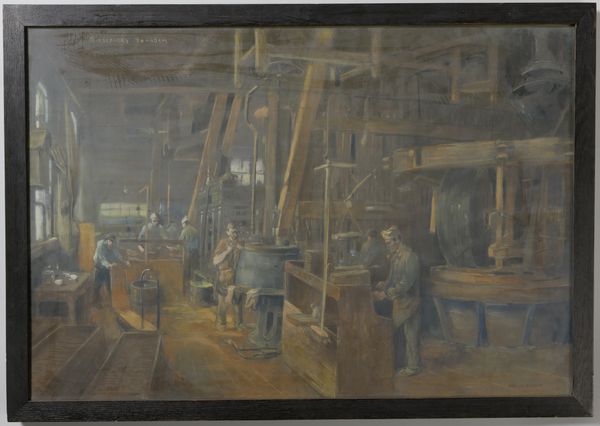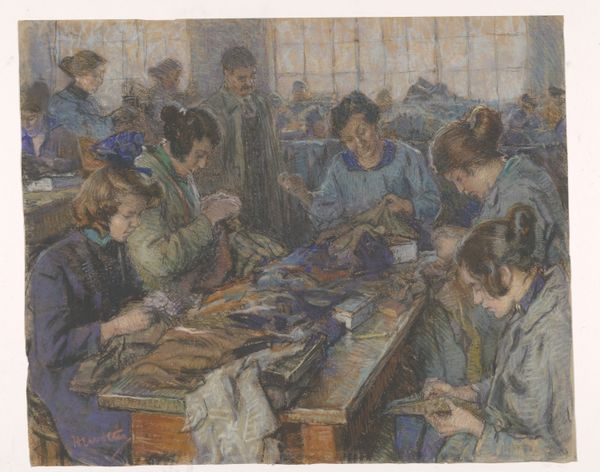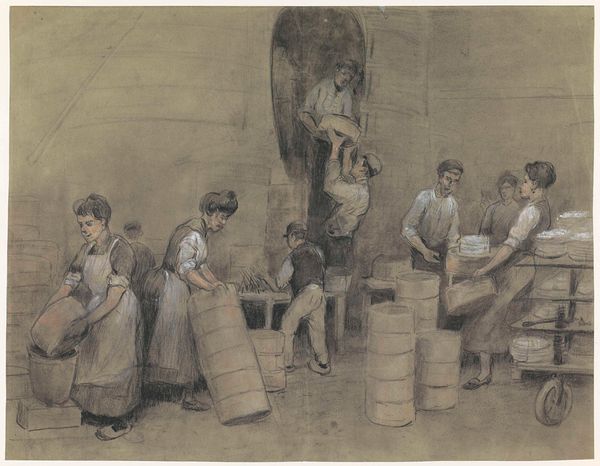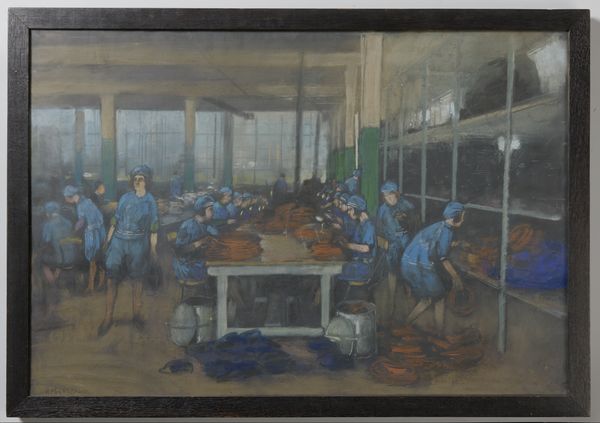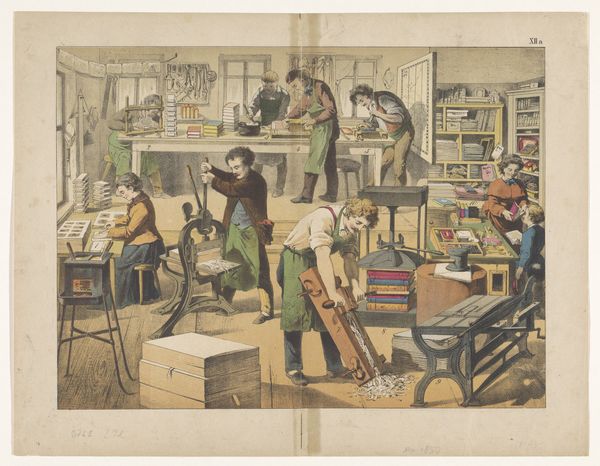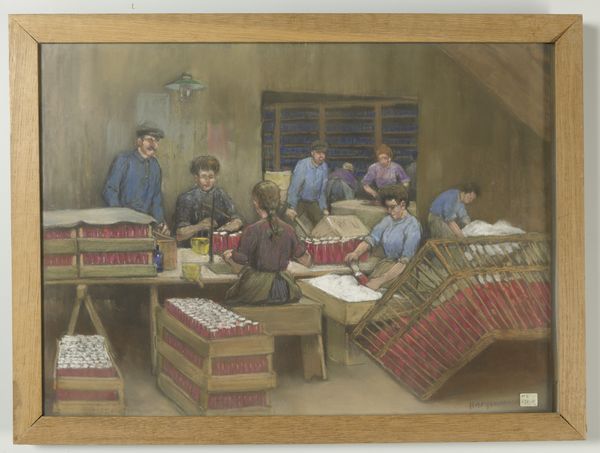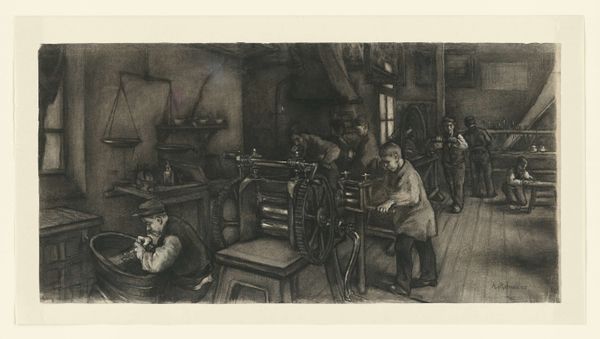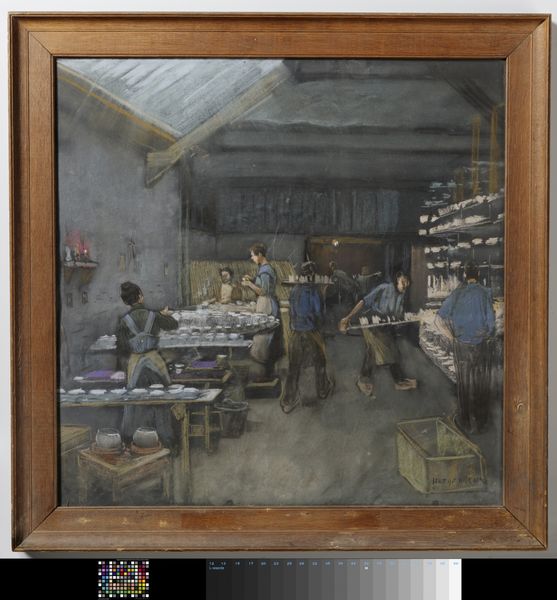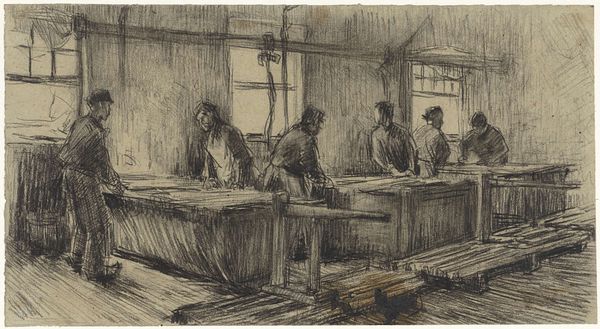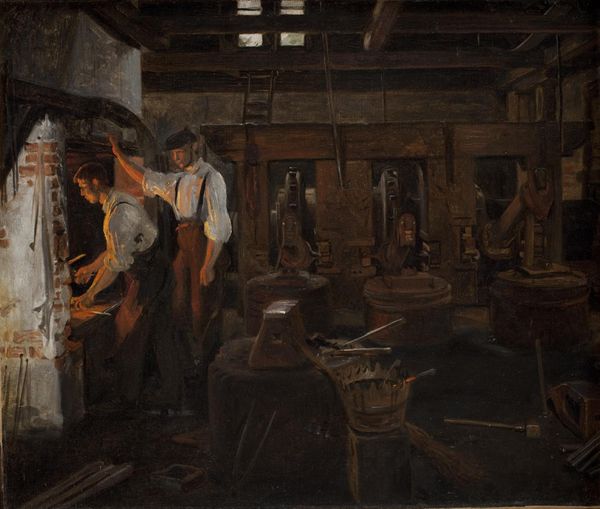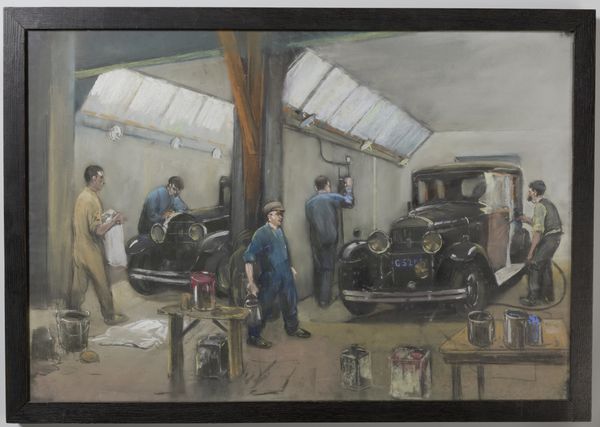
painting, oil-paint
#
painting
#
oil-paint
#
charcoal drawing
#
oil painting
#
genre-painting
#
modernism
#
watercolor
Dimensions: height 64 cm, width 93.5 cm, height 71 cm, width 101 cm, depth 3.5 cm
Copyright: Rijks Museum: Open Domain
Curator: Ah, yes. "De eerste sigarenmachine in Nederland," or "The First Cigar Machine in the Netherlands," by Herman Heijenbrock, sometime between 1871 and 1948, in oil. Editor: It's... interesting. Very industrial, that cool, smoky palette, and all those faces fading into the background like ghosts. A bit sad, isn't it? Curator: It absolutely is, capturing the changing face of Dutch industry. Heijenbrock often focused on these scenes, showing the rise of mechanization. It depicts the inside of a cigar factory, presumably one of the first to employ this technology. You can see workers hand-rolling cigars alongside the new machine. Editor: There’s this tension. That mechanical, impersonal process kind of looming over everyone. It’s like a silent promise—or a threat—of what's to come. It feels so matter-of-fact but tinged with worry. Do you get that, too? Curator: I think so. There's a realism, almost a documentarian quality, but also a clear empathy for the workers. Look at how individualized their faces are, even the ones in the back! Yet they're all performing this repetitive task… Editor: Yeah, there’s almost something...sacred? About the monotony, you know? The repetition almost creates a hypnotic hum, but whether that hum inspires hope, dread, or maybe just the dull acceptance of work... that's anyone’s guess. I also notice all of the tobacco on their tables, the colors almost pop. Curator: Perhaps Heijenbrock intends to convey a bit of that feeling. I find myself questioning, is the machine empowering, or is it just another shackle? His compositions tend to highlight these nuances of societal and technological progress. Editor: So, in its muted, almost mournful way, this piece asks: at what cost progress? Curator: Precisely. Heijenbrock leaves us to contemplate this very complex question. A snapshot of an era caught between tradition and technological change. Editor: A somber reflection of the grind, beautifully executed.
Comments
No comments
Be the first to comment and join the conversation on the ultimate creative platform.
